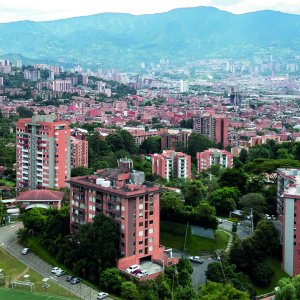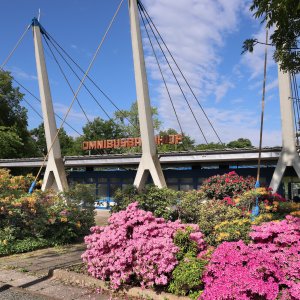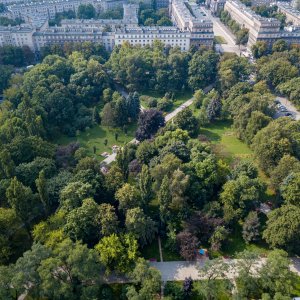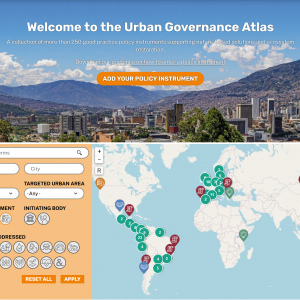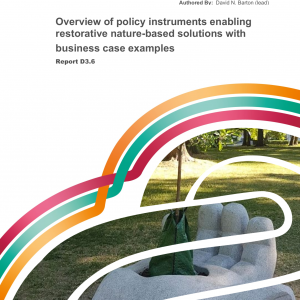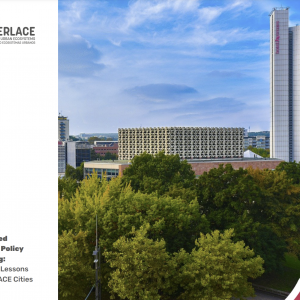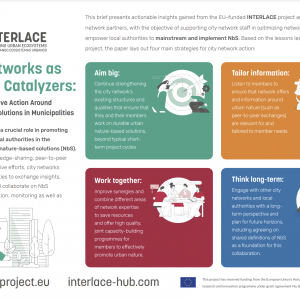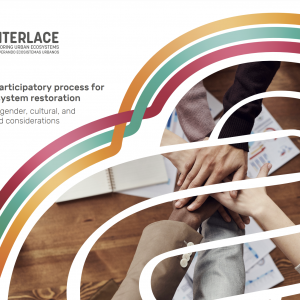Strong governance and policy frameworks are essential for mainstreaming NbS in urban planning. However, many cities face institutional silos, regulatory gaps, and funding constraints that make it difficult to develop and implement effective policies. This section explores strategies for fostering participatory governance, cross-sector collaboration, and adaptive policy-making to ensure the long-term success of NbS.
Why this matters
There is growing recognition that NbS play a crucial role in addressing complex urban challenges such as climate adaptation, flood management, air quality improvement, and biodiversity conservation. However, realizing their full potential requires effective governance and well-designed policy instruments. Municipalities must integrate NbS into urban planning while fostering active community participation to create policies that reflect local needs and knowledge. Without these elements, NbS risk being underutilized, ineffective, or even reinforcing existing social and environmental inequalities.
Poorly designed policies can have serious consequences. Inadequate urban planning can lead to environmental degradation, increased climate vulnerability, and deepened social disparities. Marginalized communities are often the most affected, facing insufficient green spaces, poor air quality, exposure to extreme temperatures, and heightened flood risks. Businesses also suffer from weak resilience planning, affecting economic stability and investment potential. Additionally, ineffective policies erode trust in local governments and can result in higher long-term costs due to inefficient urban development.
Common barriers
Several barriers hinder the effective design and implementation of participatory NbS policies. Many municipalities lack the technical expertise, awareness, and financial resources needed to integrate NbS into their planning frameworks. Institutional fragmentation and siloed decision-making often lead to disjointed policies that fail to address urban challenges holistically. Furthermore, existing legal and regulatory frameworks may not be conducive to innovative NbS approaches, creating procedural roadblocks. Political cycles tend to prioritize short-term projects with immediate benefits, whereas NbS require long-term commitments that may not align with electoral timelines. Engaging diverse community groups equitably remains another significant challenge due to language barriers, cultural differences, and varying levels of access to information.
Key challenges and solutions
To overcome these barriers, municipalities must adopt a multi-faceted approach to NbS governance. Strengthening cross-sector collaboration between different government departments, community groups, NGOs, private-sector actors, and academia ensures that policies are inclusive and widely supported. Inter-departmental task forces can break down silos within local governments, promoting integrated planning and decision-making.
Ensuring broad and equitable community participation is essential for creating policies that reflect diverse needs. Co-design workshops, citizen councils, and participatory mapping techniques can help foster engagement and enable residents to contribute meaningfully to NbS planning. Developing regulatory frameworks that actively support and incentivize NbS adoption includes revising outdated policies, removing legal barriers, and integrating NbS into broader urban planning strategies.
Municipalities should also explore diverse and innovative funding mechanisms to sustain NbS initiatives. Public-private partnerships, grants, and community-based funding can provide essential financial resources. Additionally, leveraging financial instruments such as green bonds can help cities secure long-term investment in NbS. Finally, incorporating monitoring and adaptive management mechanisms into policy instruments ensures that NbS governance remains responsive, effective, and evidence-based over time.
By adopting these strategies, municipalities can create resilient, sustainable urban environments that balance ecological and social needs. Participatory governance ensures that NbS policies are not only environmentally sound but also equitable, benefiting all community members.
INTERLACE tools and resources
INTERLACE has developed a range of tools and resources to help cities strengthen governance frameworks and design policies that support effective NbS implementation:
- Urban Nature Atlas: A database of 250 policy instruments from cities worldwide.
- Modules on on policy instruments for mainstreaming NbS in urban governance processes and co-creation as a form of collaborative NbS governance as part of the online course “Nature-based Solutions: How to regenerate nature to make neighborhoods more livable, biodiverse, and resilient to climate change”
- A report on integrating NbS in policy and planning
-
Overview of policy instruments enabling private sector provision of restorative nature-based solutions
-
Protocol on cultural, gender, and ethics considerations for participatory NbS governance.
You might also like to visit the City NbS Tool section on incorporating NbS in urban design and planning which relates to this topic
